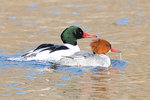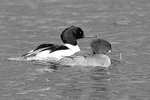 Narrowsburg
NarrowsburgLight Rain Fog/Mist, 43°
Wind: 8.1 mph
 Narrowsburg
NarrowsburgListening to angler friends toward the end of each season, one hears some interesting dialogue about the changes in trout populations. Most of the commentary centers around theory, not fact. Yet some …
Stay informed about your community and support local independent journalism.
Subscribe to The River Reporter today. click here
This item is available in full to subscribers.
Please log in to continue |


Listening to angler friends toward the end of each season, one hears some interesting dialogue about the changes in trout populations. Most of the commentary centers around theory, not fact. Yet some of the speculation does have merit and is based on common sense, logic and what anglers observe while fishing.
One issue that pops up is the purported absences of year classes in the wild brown trout populations of Catskill rivers. Over the last several years, anglers reported a lack of yearling and two-year-old (10 to 12-inch) trout while fishing some rivers.
If they are correct—and we don’t know for sure that they are—there could be a number of reasons why. In addition to fishermen, most of whom release their catch, there are a host of other forces that impact the survival of trout year classes. Low flows in the fall may prevent spawners from reaching the areas where eggs are deposited. At the opposite end of the spectrum, spring runoff coupled with high turbidity may wash out redds [spawning nests] or cover them with silt, eliminating a year class that way. But while anglers understand the impacts that low-flow, high-flow and turbidity have on trout spawning and year-class survival, some think that there are other culprits at play here.
Even though it was written a long time ago—back in 1962, to be exact—“Silent Spring” by Rachel Carson is still a well-known title. The release of that book had a significant impact on the use of DDT and other pesticides applied by famers to minimize the impact of insect predation on their crops. The research that led Carson to write “Silent Spring” was based on findings that revealed that a number of species of fish-eating birds were unable to reproduce because DDT ingested by adults, via the food chain, prevented egg shells from fully developing and hatching. It took 10 years, but DDT was finally banned for use in the U.S. in 1972. As a result, populations of eagles, ospreys, mergansers and other fish-eating birds rebounded dramatically.
These days, it is not uncommon to see half a dozen eagles soaring above the East Branch. They are a majestic and welcome sight. And while eagles eat fish, they also eat a variety of wild foods, including carrion, so are not likely to be impacting the trout stocks of Catskill rivers to a significant degree.
What about ospreys, mink, otter? From our observations, there don’t appear to be enough of these predators around our rivers to cause a decrease in trout numbers. What’s left?
The common merganser is a fish-eating duck, and there are a lot of them. Each year in June and July, it is not uncommon to see a mother merganser swimming upstream next to the bank with a brood of up to 15, perhaps more, ducklings following along in her wake. Anglers that have watched mergansers know that Mom has her head under water most of the time as she swims along upstream. Fifteen or so babies are a lot of mouths to feed. Since these birds feed in the near-shore shallows, it makes sense to conclude that Mom is catching a lot of young-of-the-year trout. There are lots of mergansers, lots of babies and few merganser predators.
This line of reasoning suggests that merganser predation could be a significant cause of trout population decline. Now that the New York State Department of Environmental Conservation is undertaking a study of the Upper Delaware watershed, we urge that it take a hard look at the impact that mergansers may have on trout populations of that system. It would be good to know if our theory is correct.
Comments
No comments on this item Please log in to comment by clicking here